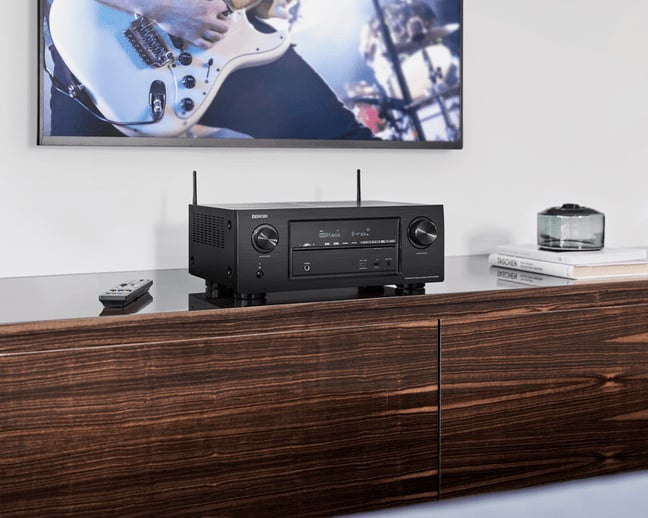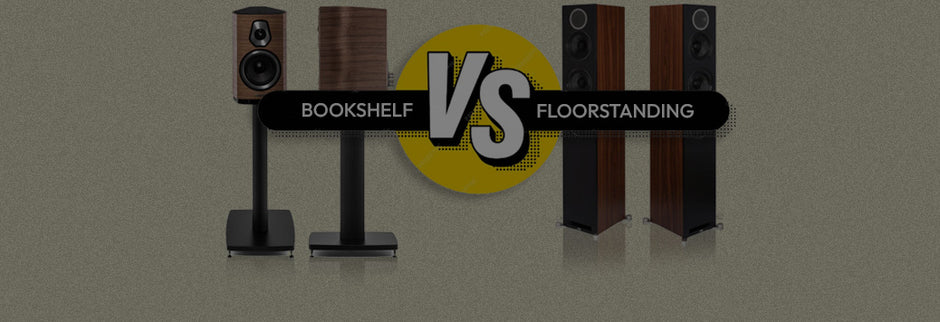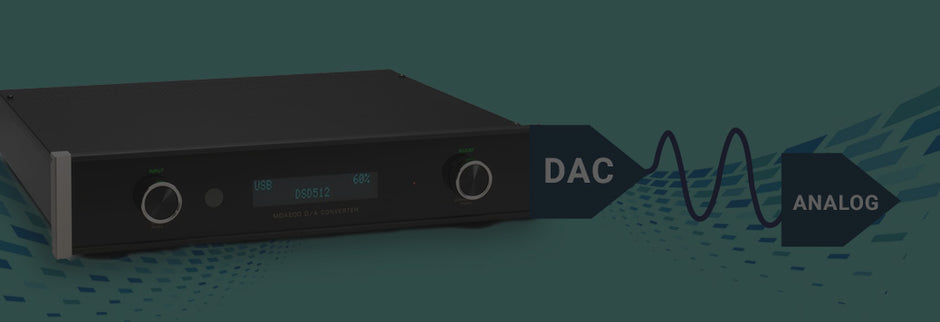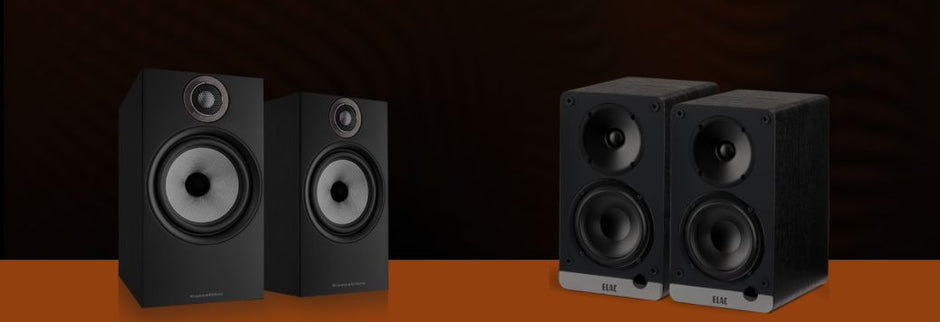
In your search for the ultimate home theatre system, you come across various audio and video electronics such as speakers, media players (Blu-Ray, DVD players, HTPCs etc.), displays (flat-panel TVs and projectors) and AV receivers among a huge list of others. From all the above-mentioned electronics, the AV receiver (AVR) is often the most misunderstood and underutilised component of multichannel home theatre systems.
In our conversations with numerous home theatre enthusiasts, we’ve realised that while a few people have a fair understanding of the role of an AV receiver, there are a few users who could use some help in getting to know this crucial home theatre system component. This blog-cum-guide from Ooberpad not only helps you understand AV receivers but also shares valuable ideas, tips and tricks to get the most out of your home theatre system.
What is an AV receiver?
An A/V receiver is the electronic component that controls and drives your home theatre experience. Without any doubt, the AV receiver is the hub of a home theatre system. It takes in audio and video signals from various sources and routes them to their respective outputs. For e.g. If you have connected a Blu-ray player to an AV receiver via HDMI (for both audio and video signals), the AVR sends the video signal to the connected display (TV or Projector) and the audio signals to the speaker system (5.1 or 2.1).What does an AV receiver do?
Before you can evaluate A/V receivers, you need a good understanding of its functionality and the tasks it is capable of handling. Below are 5 key functions of a regular AV receiver.-
Connecting and switching between audio sources
Every audio source in your home theatre such as CD players, Turntables or digital audio players connect to your A/V receiver. The preamplifier section of the AV receiver allows you to easily switch or select between the connected audio source that you want to listen to. That’s right, with AV receivers, you can say goodbye to connecting and disconnecting wires manually, everything can be switched just by pressing a few buttons.
-
Connecting and switching between video sources
All video source devices are also connected directly to the A/V receiver, which is further connected to your display devices such as the Television or the Projector. This setup greatly simplifies the selection of video sources when you either want to play Blu-Ray or DVD movies, connect your gaming consoles or connect to online streaming media via laptops or other computing devices. In most cases, you can easily select what you want to watch via the AV receiver’s remote. It saves you the hassle adjusting or manually connecting cables between the multiple sources and the connected display.
-
Amplifies audio signals to drive multiple speakers
An important functionality of an A/V receiver is that it contains at least five channels of amplification to drive or provide power to your surround-sound speaker system. Not only does its amplify the signal but it also ensures that the right signal reaches the right speaker. It is important to know that currently there are AV receivers that even support 7.1 and 9.1 channel configurations.
-
Decodes surround-sound format
Today’s movies and games are available in numerous surround-sound technologies such the popular Dolby DTS, Atmos and THX among others. From all the components of a home theatre system, the AV receiver is the only one with the ability to decode analogue and digital surround-sound formats. These surround-sound technologies make the audio immersive and create a cinema-like experience. The ability to decode surround-sound formats is a feature that distinguishes an A/V receiver from traditional stereo amplifiers you may have come across.
-
Radio tuning
Part of the definition of an AV receiver is that it includes a radio tuner. Many A/V receivers include satellite radio receivers for Sirius or XM radio. However, it is important to know you’ll have to pay extra for the satellite radio subscription service. AV receivers also have the built-in capability to play local FM and AM radio stations.
-
User interface for home theatre setup
An AV receiver also assists in connecting, setting up and optimising home theatre systems via a simple user interface. The interface options include the receiver’s remote control, the display on the receiver’s front panel and an on-screen display on your television.
-
Other connectivity options
Apart from all the functions mentioned above, modern AV receivers offers a range of other features such internet connectivity via Ethernet ports or WiFi, wireless music streaming via Bluetooth, wireless video casting or screen mirroring via DLNA/Miracast/Airplay, multi-room audio output and even DSP-based room-calibration for optimized sound among a huge list of others. Many of these additional features depend on the make, model and price of the AV receiver.
What are the basic components/aspects to look for in an AV receiver?
Below are key aspects to consider especially while you are looking to buy an AV receiver.
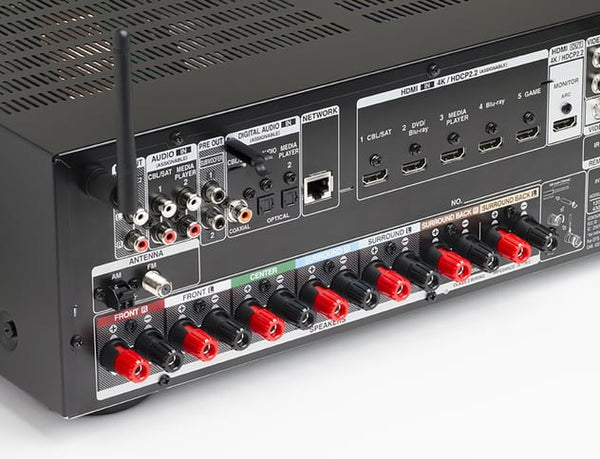
-
Power output
Power output is one of the first features you look for when selecting an AV receiver. The power rating of your speakers dictates the kind of receiver you would require. In AV receivers, the power ratings are described in watts per channel where each channel is one speaker. On most receivers, you’ll see impedance measured at 8 ohms. Make sure that number matches the impedance of your speakers. The power rating of the speakers such as Watts and Impedance (Ohms) should be mentioned in product literature/manual or on the back panel of the speaker enclosure itself.
A good thumb rule is to have sufficient headroom in terms power between the speaker and the receiver’s amplification. For e.g. if your speaker is rated at 50W @ 8 Ohm, it would be wise to opt for an AV receiver with at least 100W at @ 8 Ohm. This is mainly done for two reasons, firstly, to ensure that the speakers are not under powered and secondly to future-proof your AV receiver in case you plan on upgrading to a speaker with a higher wattage.
-
Video inputs
Most of today’s AV receivers feature HDMI, component and composite inputs for video signal connectivity. Ensure to opt for an AV receiver that is compatible with your current source and display equipment or for the one with the latest specifications. The number of inputs heavily depends on your requirements. We suggest opting for a model with at least 3 HDMI inputs.
-
Audio inputs
AV receiver can accept audio from various sources such as HDMI, digital optical, coaxial and analogue stereo inputs. If you want to listen to vinyl records, then the AV receiver should have a phono input. Additionally, many AV receivers may also feature 3.5mm jack for AUX connectivity or 6.35mm for basic karaoke microphone connectivity.
-
Multi-channel speaker outputs
The number of multi-channel speaker outputs also plays an important role while looking for an AV receiver. Currently, most AV receivers are built for 5.1 or 7.1 channel surround system. For a basic home theatre setup, you must have a minimum of 5 speakers and 1 subwoofer (5.1). For a fuller experience, you could opt for a 7.1 system. Often with a 7.1 AV receiver, you can set up a 5.1 home theatre in the main room and use the additional two channels as stereo speakers for another room. This is also the basis for multi-room connectivity in AV receiver from many manufacturers.
Why do you need an AV receiver?
Today’s AV receivers handle much more than audio signals. In many ways, the AV receiver is the brain or the central processing unit of a home theatre system. Without it, you would have rather limited options when it comes to entertainment options in your home theatre setup. Without an AV receiver, the home cinema experience would be lacklustre and boring. It brings movies to life and also helps you easily manage your precious AV components.We hope you now understand the awesome benefits an AV receiver offers in your home theatre system. In the next blog, we’ll be discussing how to correctly set up your multiple devices and speakers systems with an AV receiver. Do follow our blog for more such tips, tricks, tutorials and other useful information.



